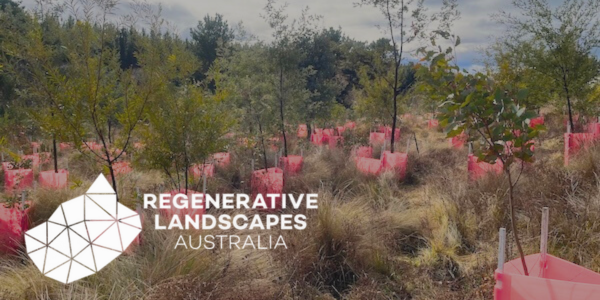Save Of Species – Scarlet Robin Program & South East Local Land Services

FENCING: Green Army workers assisting with fencing on Mulloon Farm. Photo: Elspeth Kernebone.
Small patches of regenerated woodland in southern NSW will create stepping stones of refuge for the vulnerable Scarlet Robin. This small red bird is facing the threat of extinction, with populations declining by as much as 20 per cent in some parts of NSW.
And its not just the Scarlet Robin: the Hooded Robin, the Flame Robin, the Diamond Firetail, the Speckled Warbler, the Brown Tree Creeper, the Gang-gang Cockatoo and the Glossy Black Cockatoo are also facing extinction.
What draws these birds together is the fact that they rely on a type of woodland habitat that land clearing has made scarce. The birds rely on areas with tree canopy cover, a layer of shrubs and ground cover that includes fallen branches, logs and leaf litter.

ARID: Treeless expanses create exposed windswept paddocks. Photo: Elspeth Kernebone.
In an effort to save these species, South East Local Land Services is offering landholders grants of up to $10,000 to regenerate land of this kind on their properties.
At Mulloon Farm, manager Nick Huggins has taken advantage of a grant to do just this, in conjunction with broader restoration work on the property, itself part of a project to rehydrate the landscape around Mulloon.
Extensive fencing works to foster woodland areas have in part been funded by a grant.
Mr Huggins takes a holistic approach to farm management, seeking to increase productivity by segmenting the land, to increase recovery time for paddocks and create small pockets of woodland.
These work as wind breaks sheltering the land, to create a sheltered environment for both cattle and grass.
“Our focus here as a big thing is landscape function, and thats the ability for the water to penetrate into the ground, plants to grow, and to stabilise landscape”, Mr Huggins said.

GO GREEN: Fencing works help foster habitats suitable for woodland birds. Photo: Elspeth Kernebone.
GO GREEN: Fencing works help foster habitats suitable for woodland birds. Photo: Elspeth Kernebone.
“Every little edge we put in, like a tree trunk, it allows a bit of shading,” Mr Huggins said.
“It allows a bit less wind, more warmth, water to gather, animals to gather, small insects, and the grass actually grows better.
“It’s also going to benefit us in increasing landscape function, so increasing the ability of the grass to grow”.
It just has multiple benefits, not just for the Scarlet Robin, but there are so many other vulnerable species through this area, that its going to benefit them all.
• Grants are available in the Braidood, Burra, Michelago, Bredbo and Delegate areas – Contact your local office of South East Local Land Services.
See the original story published by : Save our Scarlet Robin
http://www.townandcountrymagazine.com.au/profile/459/elspeth-kernebone


